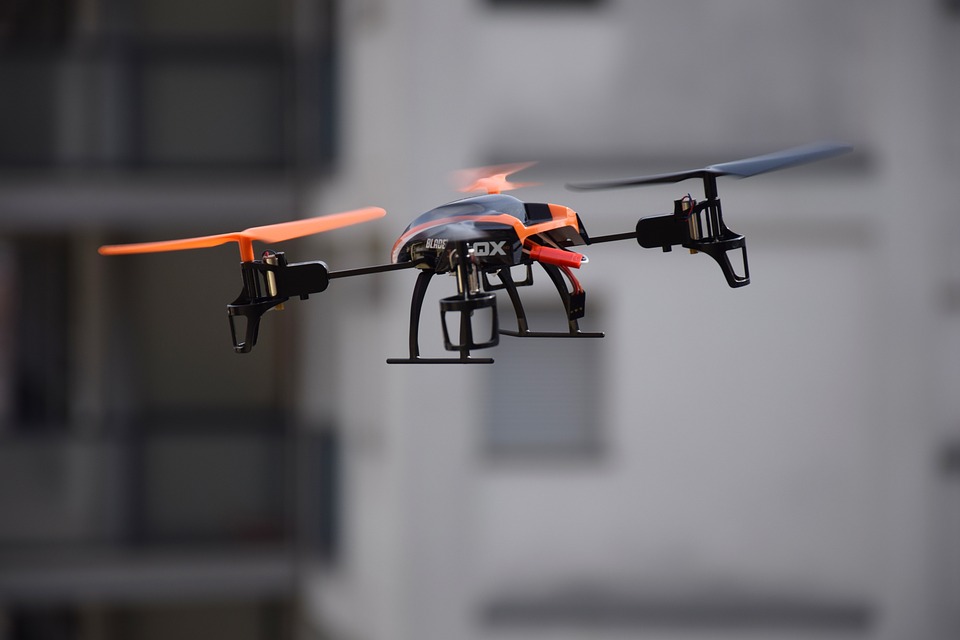Drones – remotely controlled flying machines, often equipped with live video streaming – are rapidly increasing in popularity. Consequently, people in the construction business are finding all sorts of great applications for them, including the inspection of remote locations, getting a high viewing angle for monitoring construction progress, or showing off an impressive aerial view of a finished project. However, until very recently, the use of drones for many business reasons has been illegal.
The Federal Aviation Administration struggled for several years to determine how to regulate “unmanned aircraft systems (UAS)” in the national airspace. In June, new rules were finally issued that allow commercial use of drones within certain limitations.
The new rules covering non-hobby and non-recreational use went into effect on August 29, 2016. They allow UAS weighing 55 lbs or less to be operated by a remote pilot over the age of 16 who has a remote pilot certificate with a small UAS rating, or who is under the direct supervision of a certificated remote pilot. (In other words, if you have a remote pilot certificate, your 16-year-old daughter could operate the drone while you’re standing by watching her.) The drone also must be registered with the FAA. It allows certificated pilots to pass the controls to one another during flight, and also allows automated flight provided the pilot in command (PIC) has the ability to override the automation system and control the aircraft directly.
The UAS can be operated up to 400 feet above ground level, or higher if it stays within 400 feet of a structure and does not get more than 400 feet above the highest point on the structure. (This keeps it safe from interfering with other aircraft.) Visibility must be at least 3 miles from the PIC’s location. Maximum allowable speed (ground speed) is 87 knots (100 mph) and the UAS must stay more than 500 feet below any clouds, or more than 200 feet above them.
The UAS must stay within the operator’s line of sight and close enough that the operator can see it with the unaided eye (corrective lenses are OK, binoculars are not). Operation must occur during daylight hours, but this can be extended to Civil Twilight (30 minutes before dawn to 30 minutes after sunset) if the UAS has appropriate safety lights.
It may not be controlled from a moving aircraft, but can be controlled from other types of moving vehicles (car, boat, scooter) if flown over sparsely populated areas. It can be used to carry non-hazardous payloads (such as making deliveries) provided they are securely attached and do not affect the aircraft’s flight abilities or controllability. However, deliveries for hire (delivering someone else’s property) may not be controlled from a moving vehicle (Sorry, Fed-Ex). It may not be flown over people who are not involved in the flight. (This is a safety rule, not a privacy rule. The FAA does not issue privacy rules, but cautions that local privacy laws apply.)
Obviously, UAS may not interfere with other aircraft, and if they're flown within five miles of an airport, the operator is required to give the airport prior notice. Any accidents involving injury to people or property damage in excess of $500 must be reported to the FAA.
How do you get your remote pilot certificate? You must pass an aeronautical knowledge test administered at a knowledge-testing center (find a list of them here: http://www.faa.gov/training_testing/testing/media/test_centers.pdf). Studying for the test may be done at home, online, or at a training center. Once you pass the test, your application may be sent in either online (iacra.faa.gov/iacra) or by mail, where it will be vetted by the Transportation Security Administration (TSA) and processed by the FAA. If approved, you will receive a permanent certificate, with a required knowledge test to be re-taken every two years. There are simplified procedures for people who already hold a Part 61 pilot’s certificate.
What this means is there are many possible uses that can work to your advantage in the construction industry: a contractor with a pilot’s certificate can monitor roof construction from the ground and show his customer the progress. An owner or facilities manager can inspect for maintenance issues high up without having to climb a ladder or walk on the roof. Or, regarding simple tasks, a drone with enough lift could carry a package of screws up to the guys installing the roof panels. And of course, you can make a great aerial video of your project or facility for your website.
A summary of the rules, a detailed advisory circular, and the complete text of the rules are available at www.faa.gov/uas.
More from Author
Doug Clark | Jan 15, 2018
Why architects and engineers like metal building systems
The combination of design flexibility and high value-to-cost enable design professionals to provide their clients with cost-effective solutions for their practical and aesthetic requirements.
Doug Clark | May 8, 2017
The builder is the building: Finding the right builder
The most important factor in making sure the where, when, what, and how go smoothly is making sure you pick the right who.
Doug Clark | Feb 25, 2015
Why churches are being built of metal
Affordability and speed of building are important factors.
Doug Clark | Oct 28, 2013
Metal roofs are topping more urban dwellings
Given their durability and ease of use, metal roofs have been a common feature on rural houses for decades. Now they’re becoming an increasingly popular choice on urban dwellings as well.











